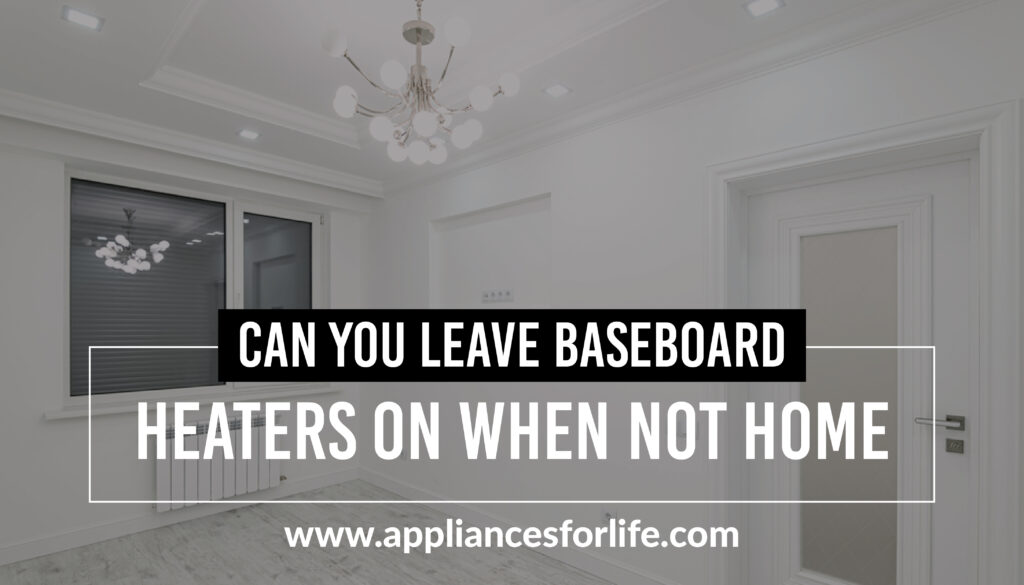- The necessity of a heating system is usually not appreciated until summer is up; although, individuals who live in relatively colder environments will have a slightly different opinion. A heating system- any heating system at all is greatly cherished during winter- More importantly, a heating system with a slim profile and takes up very little space is even a more preferred choice in most homes.
- Whether convection or hydronic, a baseboard heater has a slim profile that takes up very little space, making it an ideal heating solution for small rooms. Whether yours is an old baseboard heater or a newer version, it is a perfect secondary source of heat in the home.
A baseboard heating system is a type of heating that allows you to control the temperature in individual rooms where they are installed. It is one of the appliances that emerged in the post-war era. The baseboard heating unit is circulated along the bottom of the surrounding walls of a room or room so that the heat produced is transmitted and transported through these units. The baseboard heating units run along the base of your wall and generate regulated heat when turned on; it does this effectively, using metal heating elements to generate and slowly release heat into the rooms where it is placed. If you are wondering why these heaters are located along the bottom of the walls, they are because heat naturally rises. Hence, when it starts along the floor of your room, the heat slowly rises into the area between the floor and ceiling, where most of your time is spent.
Table of Contents
Toggle
Broadly speaking, baseboard heating belongs to the electric resistance heating system category. As such, it converts the totality of the energy they use into heat, unlike other heating systems like gas furnaces which converts only 80 of their energy into heat. Indeed, with baseboard heating, there’s no need for furnaces, ducts, or blowers. The unit creates heat from electricity, gas, or water, slowly rising from the floor to the ceiling to warm the room.
Baseboard heaters are almost always located on perimeter walls under windows which helps counteract the cold air entering the home. Electric baseboard heaters heat specific zones, so each unit will have a separate thermostat. You can also get programmable thermostats, which will allow you to set the temperature to automatically drop when you’re not around — a great way to reduce energy costs.
Types Of Baseboard Heaters
There are various types of baseboard heating out there, including gas baseboard heat, hot water baseboard heat, and hydronic baseboard heat. Hydronic baseboard heaters are also called hot water baseboard heaters; they work by sending hot water through a series of copper coils located in the baseboard units strategically placed in each room.
Electric Baseboard Heating
Electric baseboard heating is so called because it runs exclusively on electricity. Even technically, electricity plays a key role in all baseboard heating systems. Electric baseboard heaters are relative the most common in the United States. They are made of heating elements and electric coils on the inside, which heat up, just like the heating elements in a toaster. All you need to do is flip it on or off to get the heating started.
One common usage of electric baseboard heaters is for them to run in a bedroom over the night; this is not an issue since they are quite energy-efficient. While this heater is on, the whole-house heating system can be put on a budget t-friendly low setting. Apparently, the baseboard heating system is mostly auxiliary because it is there to augment the heating capacity of a more central and powerful heating system.
When it is not used simultaneously with a central heating system, it is used as a backup of the same central heating system- just like when you turn the main heating system off overnight but turn on your baseboard heating system instead, to save some energy. Therefore, You don’t need to make any major or expensive modifications to your existing heating system, and you’ve got extra heat right where you need it. You can keep the heat turned down on your primary system, so you’re not wasting energy heating empty rooms.
Electrical baseboard heating works through convection, such that, as cold air passes through the window of your room, it falls on the baseboard and enters through its vent. The heater transforms the cold air into hot air through a series of heated metal fins in the baseboard unit. The hot air rises from the baseboard and is dispersed into the room. This process repeats itself to keep your room saturated with warm air.
Electric baseboard heaters are quite famous because they are relatively cheaper to purchase. Still, the negative side to this is that they can be very costly to sustain over a prolonged period of time. For this reason, more than any other, homeowners typically choose not to rely on electric baseboard heating units as full-time solutions for the whole house. And it is this same reason that It’s for this reason, more than any other, that homeowners typically choose not to rely on electric baseboard heating units as full-time solutions for the whole house.
Hydronic Baseboard Heating
The mechanics of hydronic baseboard heating is slightly different. Electricity still generates the system’s heat, but it does so indirectly. It is indirect because the electric current supplied in the baseboard unit warms up the fluid/ water stored in another compartment of the baseboard. When the fluid is well heated, its steam radiates into the room where the unit has been installed. This working mechanism is why hydronic baseboard heaters are considered relatively more efficient. When fluid is heated, it takes a very much longer period of time to cool down compared to the metallic fins present in electric baseboard heaters.
Each unit of this hydraulic heater takes a small amount of heat from the water and sends it to the next heater. A low-end installation means the units further away from the boiler get less heat. Installing flow control valves will stabilize the heat in each room by forcing the earlier units to use less water, conserving heat for later in the system.
Advantages of The Baseboard Heating
Like any heating system out there, baseboard heating has pros and cons, which will be considered below. Depending on how you see it, a major disadvantage or a precaution is that your heater can be left on without proper planning. Nearly every heating appliance should be used with a lot of caution to avoid fire disasters. Many people also ask if their hair dryer can be left on overnight, and they get the same answer.
Zone Heating
Zone heating is one of the greatest advantages of a baseboard heating system- this is why it is so famously used. Baseboard heaters allow you to control the temperature in individual rooms where it is installed; this is very much possible, even without using smart home technology. Your bedrooms and living room can have the heaters turned on when occupied and turned off when they are not. Hence, it is completely left to you to decide whether or not you want to leave your baseboard heater on when not home.
Now, a baseboard heater does this heat regulation and control independently. This means that if one room runs cooler than the others and needs a boost, a baseboard heater can raise the room’s temperature without affecting the rooms where it has been installed.
Although it is tempting to assume that baseboard heating systems are more energy-efficient than others, this is not the case. according to research, homes that use baseboard heaters and traditional air conditioning spend about $1,300 more per year than homes that use other ductless heating systems like mini-split heat pumps.
Easy Installation
Baseboard heating systems are quite easy to install, so easy that you may not need to consult a top appliance company for installation. Their installation is relatively cheaper even- This is so because they don’t require ductwork. The units are simply mounted to the wall and hardwired into the home’s electrical lines. Even hydraulic baseboard heaters that require tubing to run inside the walls are not as expensive as ductwork installation. And this is the reason baseboard heaters are a great option if you need to heat a single room- usually an infrequently used room.
One thing to note for electric baseboard heating: there are both 120-volt baseboard heaters and 240-volt baseboard heaters. 120-volt baseboards are easier to install because they don’t require additional electrical upgrades. You can just plug them into an outlet. 240-volt baseboard heaters, on the other hand, require their own dedicated 20 amp circuit and 12-gauge wire.
Installing a baseboard heater
The baseboard heater installation involves installing the heater itself and setting up the electrical wiring.
Mounting the heater to the wall is straightforward. The electrical work, however, usually calls for a licensed electrician. Depending on your local bylaws, you might also need to secure a permit before starting the installation.
According to Squareone Appliance, here’s the rough outline of how to install an electric baseboard heater:
Step 1: Measure
You’ll be mounting the heater to the wall, so the first step is to find the studs in the wall on which you’re installing it. Use a stud finder and mark the stud locations with a pencil. If there’s baseboard molding in the room, you’ll need to carve a chunk of it away to make space for the heater. Measure the length of your baseboard heater and mark that length on the baseboard.
Step 2: Cut
First, you can cut away the baseboard from where your heater will go. If your baseboard is soft or thin, you can hack it away by scoring your cut marks with a knife, then finishing the job with a chisel. Otherwise, you can use an oscillating cutting tool if you’re comfortable with power tools. You can also remove the whole board, cut it as needed, and re-install the sections that the heater won’t cover.
Step 3: Wire
This part should only be done by a qualified electrician with the requisite permits. If you’re qualified, you probably already know how to wire a baseboard heater. Baseboard heaters need dedicated circuits, so you’ll need to add a circuit to your breaker box (but make sure it stays shut off for now). Then, run the wire to the heater and the thermostat (if you have a wall-mounted thermostat). Finally, connect the wire to the heater itself. There should be an electrical panel on the heater that you can access by removing a screw and lifting the cover. Under this cover, you’ll find the wires that need to be connected to the power supply and thermostat.
Step 4: Mount
Once the wiring is in place, you can mount the heater to the wall. Normally, you do this by putting screws through the back panel of the heater and into the wall studs. You might have to pre-drill holes in the back of the heater to match where your studs are.
Secondary Source of Heat
A baseboard heating system can be a very reliable secondary source of heat. For example, if life in Australia, the arctic, or any other extremely cold place like those and your home does not have proper insulation, an electric heat pump may not suffice in keeping up with the freezing temperatures in those environments. Baseboard heaters are a good solution for those days when you need supplemental heat in the most used spaces in your home. That backup source of heat will keep your heat pump from constantly running in vain.
Disadvantages of Baseboard Heat
Like most things in life, especially home appliances, there are downsides. Here are a few things that can make a baseboard heating system impracticable.
The Cost
As stated above, baseboard heaters may be cheap when you buy them, but it is not always like this; running them costs almost double the purchase price. It costs a lot more than other heating systems like heat pumps. You can expect to spend anywhere from $500-1,500 more per year to heat a home with baseboards than a more efficient system like a ductless mini-split heat pump.
The placement of baseboard heaters — near windows and exterior walls — also makes them inefficient. Each unit has a thermostat that controls how much it works to heat up the room. If the thermostat senses cold nearby, such as drafts from old windows, it will work even harder to keep the room warm. That constant battling of cold drafts amounts to high utility bills, especially during the coldest months of winter.
Interior Structure
The placement and positioning of items in your home have been properly planned before installing an electric baseboard heater; any plastic item or another flammable one can easily catch fire from the heat produced in an electric baseboard heater.
You can’t use long drapes on windows that share a wall with a baseboard heater. You can’t have couches or beds up against those walls. All of this limits your interior design options and can make it difficult to place furniture in those rooms.
Safety Hazard
Because electric baseboard heaters get pretty hot, they pose a great risk of fire outbreaks. It could catch fire if things are too close or on top. This is why to answer the question as to whether or not you can leave your heater on while you are away, you need to ascertain, first and foremost, the kind of heater you use; if it is the electric kind, you may need to take such precautions as getting out of the reach of children and getting flammable or plastic substances away from it, as far as possible.
While it may be okay to leave your baseboard heater on even when you are away, it requires that you take necessary precautions. Because the cover of an electric baseboard heater heats up, despite its heating elements being tucked inside the unit, you still need to watch your children constantly to ensure they don’t touch them when they’re on.
On the other hand, Hydronic baseboard heaters do not pose the same level of risk as electric baseboard heaters. While they do get hot, it’s not hot enough to start a fire.
Dry heat
The heat generated by baseboard heaters is very dry heat. They often get dry skin, throats, eyes, and bloody noses. You can use a humidifier to add moisture to the air, but that requires more electricity and regular cleaning.
FAQs
Can I leave my space heaters on overnight?
A modern space heater can be very safe to keep on for long unsupervised periods of time, including while sleeping. Be sure your heater is certified by one of the three major testing organizations and has features like automatic shutoff, tip-over protection, a shut-off timer, and an adjustable thermostat. In addition, you should follow basic safety rules like having a working smoke detector and more the heater away from flammable materials.
How much does it cost to heat a house with an electric baseboard?
An electric baseboard heater is relatively inexpensive. Depending on the options and quality, you can find them for $100 to $250. They’re the cheapest to buy but also the most expensive to operate. Hydronic heaters can cost 2-4 times as much.
15 MINUTES
ESTIMATED TIME DESIGNING AND UPLOADING THIS ARTICLE
8 HOURS
ESTIMATED TIME RESEARCHING AND WRITING THIS ARTICLE
You Might Also Like

Difference Between The Ductless and Ducted Range Hood
Choosing between a ductless and ducted range hood is not always the most straightforward task to do when you have no idea what sets them apart from each other. In this article, we will be looking at what a duct range hood is, what a

Top Appliance Repair Companies
It’s okay for your appliances to need repairs at some point, after all, they’re not built to last forever. However, when this happens, it’s very important you have the right knowledge on how to repair them or you know the best appliance repair companies. This

Grates for wood-burning stoves and Fireplaces.
It is possible to completely forget the necessity of Woodstove grates steel fireplace grates during summer, but as soon as winter arrives, the need to keep the home in constant warmth all resurfaces. Very instrumental to the working of any fireplace or some woodstove is

How to Clean LG Refrigerator Coils?
The refrigerator is an important part of every kitchen setup. It has always been the case before the evolution of technology, and way before we started to embrace the new-age technology. Refrigerators are also considered big and notable investments, and while some of them are

How to Use a NESCO Vacuum Sealer?
Food preservation is vital in every part of the world because food is one of the things human beings need to survive and live healthily. Just take a second to imagine the world without effective ways of preserving food. It means that we’ll never have

How to Use an LG Front Loader and Top Loader Washing Machine?
Washing machines are a great appliance to have around the house because they make our domestic chores easier and more convenient, most particularly doing laundry. For many years now, people have stayed loyal to the brands they believe have always given them everything they’ve ever

Water Inlet Hose for Portable Washing Machines
Installing your washer may seem easy until you get into the thick of the action. One of the things you need to make the installation process of your portable washing machine successful is a quality portable washing machine hose. In this article, we’ll be discussing

How to Prevent Stainless Steel from Rusting?
Stainless steel appliances have become very popular in different households over the years and the need to look after them properly has become very important. In this article, we’re going to be discussing how to prevent stainless steel from rust by looking at some of

Where to Shop – Our Choice of Appliance Outlet Stores
Are you in need of appliances but don’t know where to shop? Do you need something simple like an under the counter microwave or something a little more complicated like an electric stovetop or a gas cooktop? If you do then don’t stress, we are

Good Fruits and Vegetables to Juice – Plus Recipes
Juicing has become a top trend and today you can get freshly squeezed juice anywhere you go. It is convenient to be able to make juice at home for the whole family, it is healthy, tasty and so much more economical than store bought juice.

